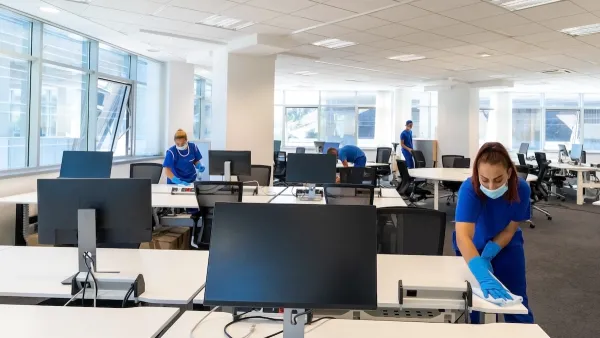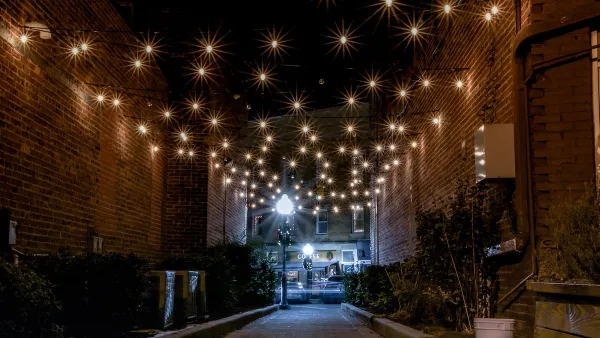While office vacancies remain high and foot traffic sparse in many U.S. downtowns, areas with housing and businesses are more vibrant and desirable than ever.

The rise of remote work during the Covid-19 pandemic has indeed shifted the center of gravity for U.S. cities, but rather than the wholesale ‘death of cities’ predicted early on, this change has simply meant that neighborhoods with mixed-use amenities are thriving while sterile, 9-to-5 business districts flounder.
Konrad Putzier and Kate King outline the phenomenon in The Wall Street Journal, writing, “Many residential neighborhoods benefit from remote work. As people spend more time at home, they frequent local shops, gyms and restaurants, boosting the economy of places such as Brooklyn, N.Y.’s Ditmas Park and Williamsburg, as well as Washington, D.C.’s Georgetown.”
Data shows visitor foot traffic is quickly rebounding to pre-pandemic levels in mixed-use, residential neighborhoods, while downtown foot traffic remains low. “Rent data, meanwhile, attests to strong demand for city living,” with rents significantly higher in desirable neighborhoods. “In the Brentwood neighborhood of Los Angeles, the median rent is up 63%.”
The authors don’t deny the challenges facing cities. “Vacant office buildings leave downtown shops and restaurants with too few customers, while falling commercial building values threaten property-tax revenues,” while “Housing shortages have pushed up rents.” But the neighborhoods with the characteristics and amenities most valued before the pandemic—walkability, access to transit, and a mix of businesses and residential uses—are continuing to draw residents eager to live there.
FULL STORY: American Cities Are Starting to Thrive Again. Just Not Near Office Buildings.

National Parks Layoffs Will Cause Communities to Lose Billions
Thousands of essential park workers were laid off this week, just before the busy spring break season.

Retro-silient?: America’s First “Eco-burb,” The Woodlands Turns 50
A master-planned community north of Houston offers lessons on green infrastructure and resilient design, but falls short of its founder’s lofty affordability and walkability goals.

Delivering for America Plan Will Downgrade Mail Service in at Least 49.5 Percent of Zip Codes
Republican and Democrat lawmakers criticize the plan for its disproportionate negative impact on rural communities.

Test News Post 1
This is a summary

Test News Headline 46
Test for the image on the front page.

Balancing Bombs and Butterflies: How the National Guard Protects a Rare Species
The National Guard at Fort Indiantown Gap uses GIS technology and land management strategies to balance military training with conservation efforts, ensuring the survival of the rare eastern regal fritillary butterfly.
Urban Design for Planners 1: Software Tools
This six-course series explores essential urban design concepts using open source software and equips planners with the tools they need to participate fully in the urban design process.
Planning for Universal Design
Learn the tools for implementing Universal Design in planning regulations.
EMC Planning Group, Inc.
Planetizen
Planetizen
Mpact (formerly Rail~Volution)
Great Falls Development Authority, Inc.
HUDs Office of Policy Development and Research
NYU Wagner Graduate School of Public Service




























